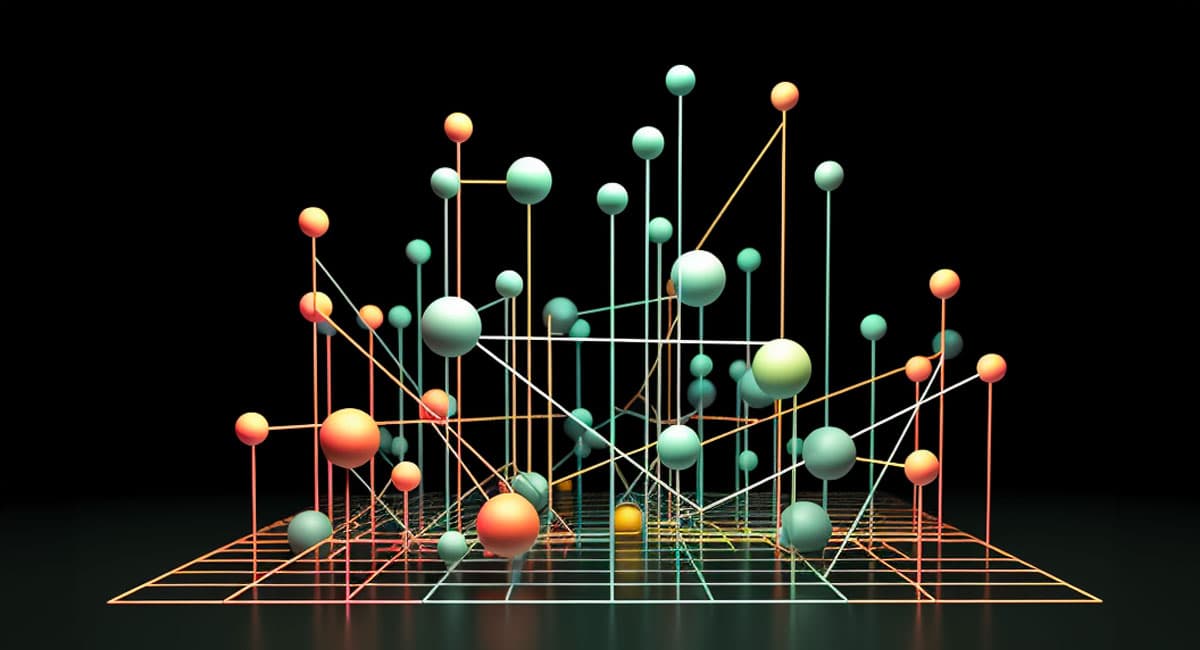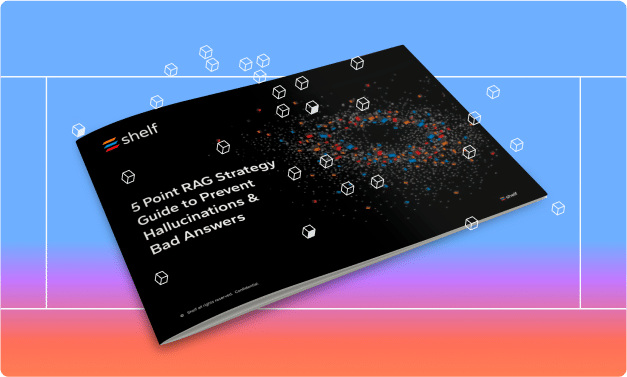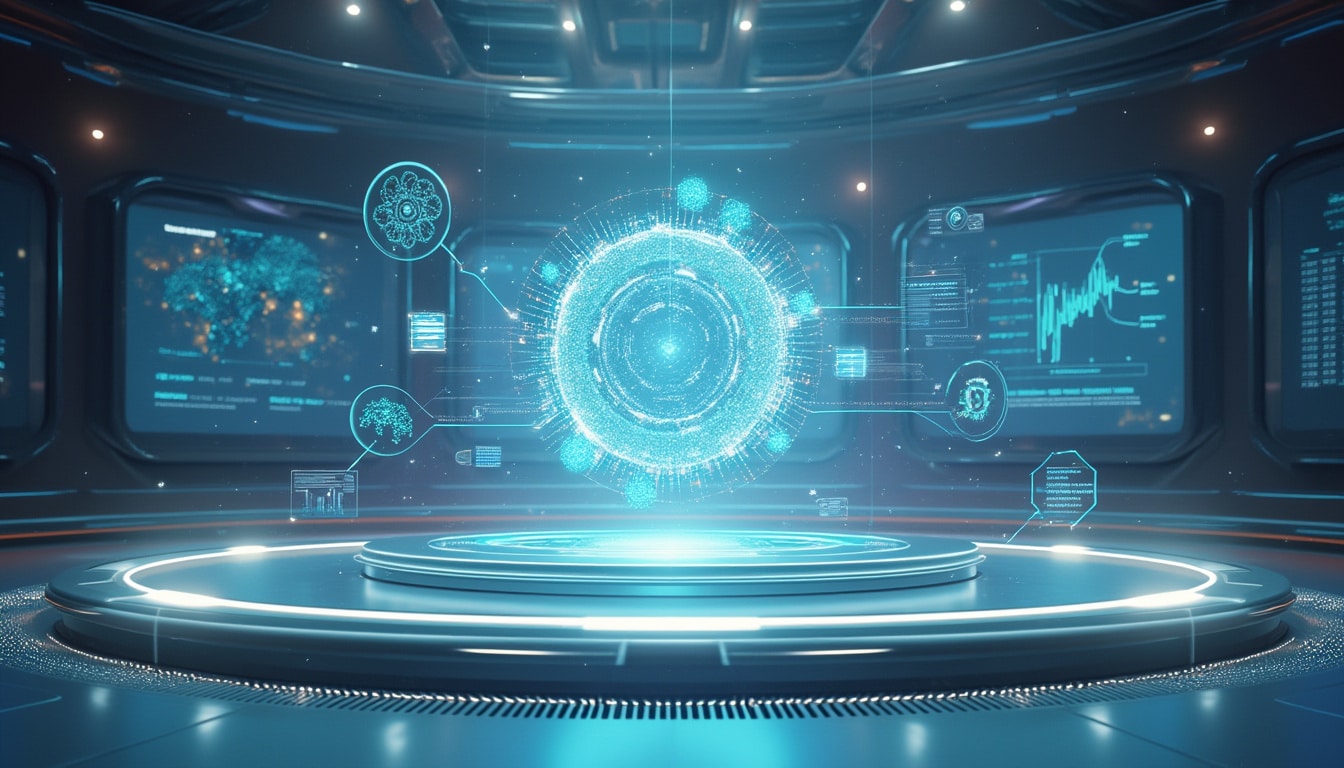Neural networks involve a series of algorithms designed to recognize patterns, interpret data, and make decisions or predictions. They are modeled loosely after the human brain’s architecture. Neural networks have become a cornerstone of AI technologies alongside others, such as rule-based systems, evolutionary algorithms, and reinforcement learning.
Neural networks have become essential to AI applications ranging from voice recognition systems to advanced predictive analytics and generative AI.
At a high level, neural networks consist of interconnected units or nodes, which work together to process and analyze complex data inputs. These networks are capable of identifying underlying relationships in the data they process, enabling them to tackle tasks that are too complex for traditional algorithmic approaches.
Through training with large datasets, they can adapt and refine their performance, closely mirroring the learning process of the human brain.
Key Components of a Neural Network
The efficacy of neural networks stems from their intricate structure, comprising three key components; neurons, layers, and weights and biases. Let’s explore each of these components.
Neural Network Neurons
The fundamental unit of a neural network, neurons are simple processors that receive, process, and transmit information. Each neuron typically performs a simple computation, like a weighted sum of its inputs, followed by a non-linear operation.
Linear relationships imply a direct proportionality – if you double the input, the output doubles as well.
For example, in personal finance, consider simple interest on a savings account: if you double the initial investment, the interest earned also doubles.
This is quite limiting, as many real-world phenomena are not linear. They might involve variables that affect each other in ways that are not directly proportional or that interact in more complex patterns.
For example, in image recognition, the relationship between pixel values and the object being represented is non-linear. An object in an image can be recognized regardless of variations in lighting, angle, or scale, which a simple linear model cannot handle effectively.
Similarly, in language processing, the relationship between words and their meanings, or sentences and their sentiments, is highly nuanced and context-dependent, not following a straightforward pattern.
The order of words in a sentence, for example, is highly relevant to meaning. Think about the change in meaning due to order changes in these two sentences.
“I have to read this book” vs “I have this book to read”
The same words are used, but the order in which they are presented changes the underlying meaning of the sentence.
Neural networks, especially with their non-linear activation functions (like sigmoid or ReLU), can capture these complex, non-linear interactions. This capability allows them to perform tasks like recognizing objects in images, understanding natural language, or predicting trends in data that are far from linearly correlated, thereby providing a more accurate and nuanced understanding of the underlying data patterns.

Neural Networks: Layers
Neural networks are structured in layers, each consisting of a set of neurons. There are three primary types of layers: input layers, hidden layers, and output layers.
1. Neural Networks Input Layer
Input layers are where the network receives its input data, such as numerical values from sensors, pixel values from images, sound frequencies from audio recordings, or encoded text data.
The input layer is designed to process this initial data by distributing it to the subsequent layers in the network for further analysis and interpretation.
2. Neural Networks Hidden Layers
Hidden layers perform the bulk of the computations through their interconnected neurons. In these layers, complex processes such as feature extraction and pattern recognition occur.
For instance, in image processing, early hidden layers might identify edges or colors, while deeper layers might recognize more complex shapes or objects. In language processing, they might first identify basic syntactic structures and then interpret semantic relationships. The hidden layers are fundamental in transforming the raw input data into abstract representations, enabling the network to understand and make decisions based on the data it receives.
3. Neural Networks Output Layer
The final layer outputs the processed information, representing the network’s decision or prediction, such as classifying an image into categories like ‘animal’ or ‘vehicle’, estimating a continuous value like house prices, or providing probabilities for potential outcomes in decision-making scenarios.
Weights and Biases
Neurons are interconnected through weights that modulate the strength and direction of the signal between them, such as emphasizing or downplaying certain words in sentiment analysis to determine the overall tone of a text.
Biases, on the other hand, are added to the input to shift the output function to either side of the activation function, comparable to adjusting the sensitivity of a fraud detection system to flag transactions as suspicious based on a predefined threshold, ensuring it reacts appropriately under varying input conditions.
Activation Function
The activation function is applied to the output signal of a neuron and decides whether it should be activated or not, influencing the network’s output. Common activation functions include the sigmoid, tanh, and ReLU (Rectified Linear Unit) functions. For example:
- The ReLU function, outputs the input directly if it is positive, otherwise it outputs zero, is particularly useful in image processing tasks to help the network learn complex patterns by effectively handling non-linear data.
- The sigmoid function, which outputs a value between 0 and 1, is often used in binary classification tasks, like deciding whether an email is spam or not.
- The tanh function, outputting values between -1 and 1, is effective in tasks where the direction of influence is important, like in certain types of financial predictions where both positive and negative changes need to be distinctly represented.
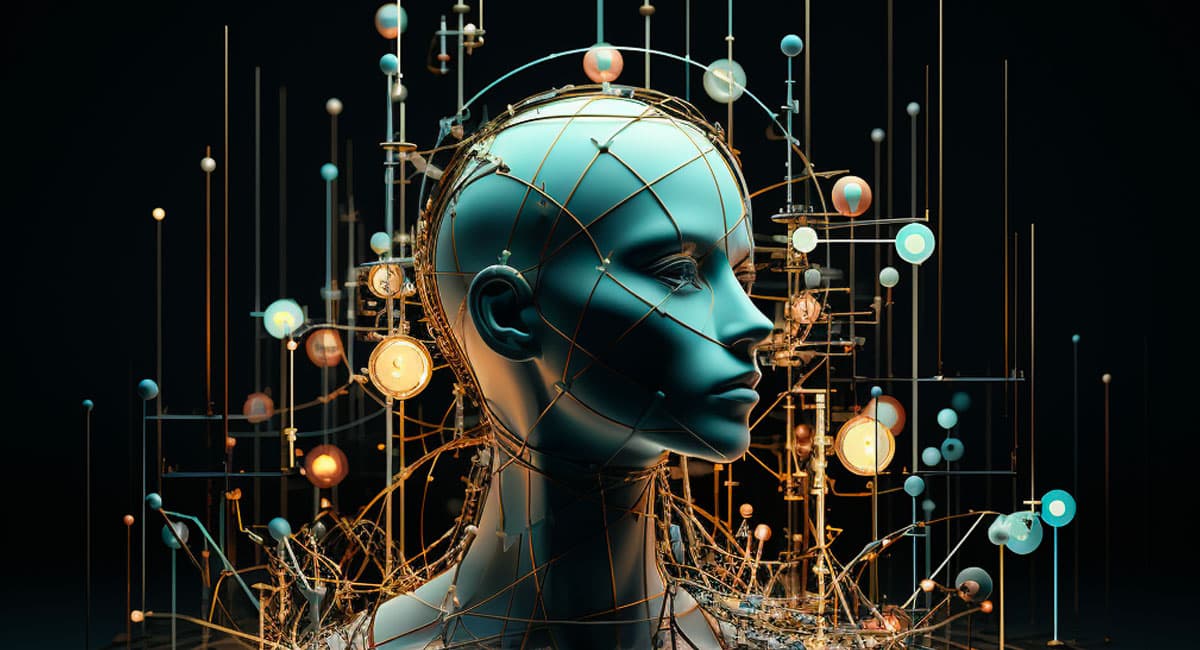
How Neural Networks Mimic Human Brain Processing
Neural networks are inspired by the structure and functioning of the human brain. Just as the brain uses a vast network of neurons to process and transmit information, neural networks use their interconnected nodes to perform complex computations.
- Learning through Synaptic Adjustments: In the human brain, learning involves the strengthening or weakening of synaptic connections. Similarly, in neural networks, learning involves adjusting the weights and biases based on the input data they receive, a process akin to the brain’s synaptic plasticity.
- Pattern Recognition: The brain is adept at recognizing patterns, a trait that neural networks emulate remarkably well. They can identify patterns and regularities in data, making them ideal for tasks like image and speech recognition, much like the human brain can recognize faces or understand spoken words.
- Parallel Processing: The brain processes information in a parallel manner, with numerous neurons working simultaneously. Neural networks replicate this parallel processing capability, allowing them to analyze and interpret complex, high-dimensional data efficiently.
In essence, neural networks offer a simplified but powerful computational model of the human brain’s functioning, harnessing its ability to learn from experience, recognize patterns, and make intelligent decisions. This resemblance has propelled neural networks to the forefront of AI research and applications, driving advancements that were once considered the realm of science fiction.
Why Neural Networks Matter for Generative AI
Neural networks have become pivotal in generative AI for two main reasons:
Pattern Recognition and Learning
Their ability to identify patterns and learn from vast datasets allows for sophisticated data interpretation.
For instance, in medical imaging, neural networks can recognize patterns in X-rays or MRI scans to help diagnose diseases, learning from a vast database of medical images to accurately identify anomalies like tumors or fractures.
Content Generation
Neural networks power AI’s capability to generate new, realistic content, such as text, images, and sounds, by learning from existing data.
An example of this is in the creation of deepfake videos, where neural networks learn from a collection of real videos and images to generate new videos that realistically mimic the appearance and voice of a specific individual, creating content that is entirely new yet convincingly realistic.
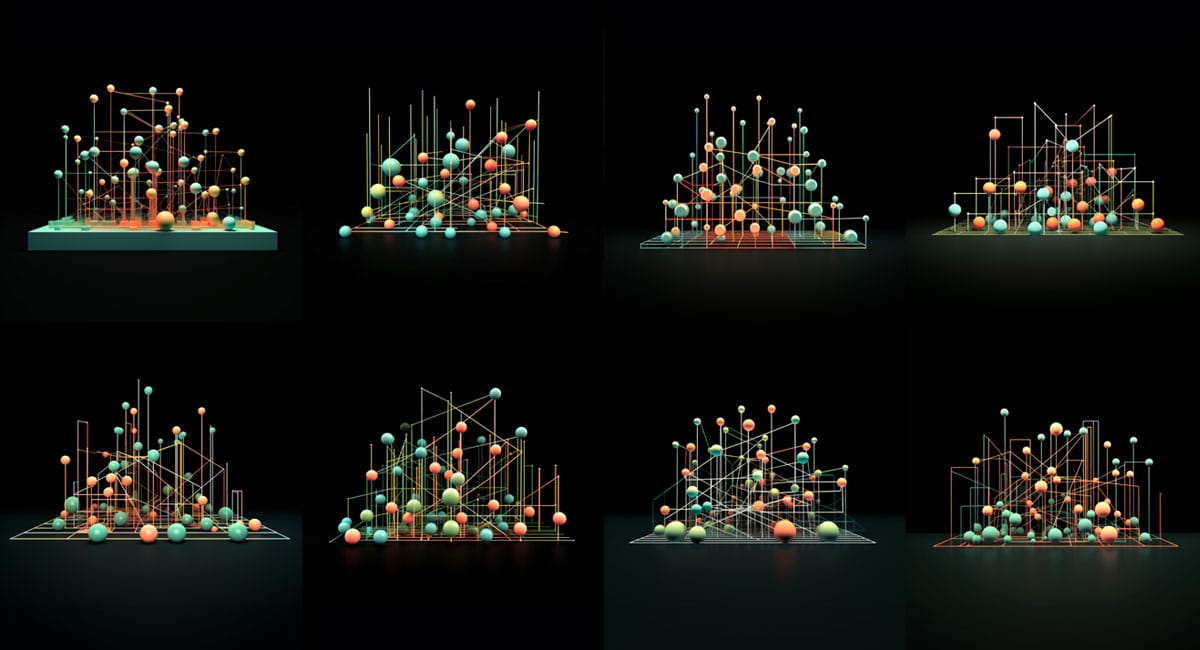
Types of Neural Networks in Generative AI
Convolutional Neural Networks (CNNs)
Primarily used for image processing and analysis, CNNs excel in tasks like image classification and facial recognition.
Transformers
Best for sequential data, such as time-series analysis or language modeling, transformers are fundamental for modern natural language processing.
Generative Adversarial Networks (GANs)
These are used for generating new content, where two networks (generator and discriminator) work in tandem to produce highly realistic outputs.
Neural Networks in Action: Real-World Applications
Enhanced Customer Experiences
From personalized recommendations to automated customer service, neural networks are improving user interactions.
Sector-Specific Applications
In finance, they’re used for fraud detection; in healthcare, for disease diagnosis; and in customer service, for chatbots and virtual assistants.
Competitive Advantages to Leveraging Neural Networks and Generative AI Within a Strategic AI Implementation
The collaboration of neural networks and generative AI is revolutionizing various sectors, each leveraging the strengths of both technologies to create groundbreaking applications. Here are industry-specific examples demonstrating their combined impact.
Retail and E-Commerce
In the retail industry, neural networks analyze consumer behavior and trends, while generative AI uses this analysis to create virtual fashion designs that align with predicted trends. For e-commerce, neural networks process user interaction data, enabling generative AI to produce highly personalized product descriptions and images, enhancing the consumer’s online shopping experience.
Finance and Banking
Neural networks in finance are adept at detecting subtle patterns in transaction data, which generative AI then uses to create synthetic but realistic financial scenarios for risk assessment and fraud detection training, thereby improving the robustness of predictive models without compromising real customer data privacy.
Healthcare
In healthcare, neural networks are able to process vast amounts of medical data, identifying patterns and anomalies. Generative AI builds on this by creating detailed 3D models of human organs or synthesizing medical data for research, aiding in diagnosis and treatment planning while ensuring patient confidentiality through data anonymization.
Manufacturing
Neural networks are employed to analyze production processes and identify inefficiencies or potential failures. Generative AI takes these insights to simulate and design new manufacturing components or processes, rapidly prototyping and iterating designs in a virtual environment before actual production.
Transportation and Logistics
In this sector, neural networks analyze historical traffic and weather data, which generative AI uses to simulate various scenarios for route optimization. This synergy helps in creating more efficient logistics strategies, especially in predicting and planning for supply chain disruptions.
Agriculture
Neural networks analyze environmental and crop data to predict farming outcomes. Generative AI uses these predictions to simulate different agricultural strategies, assisting farmers in planning for optimal crop yields and sustainable practices.
Energy Sector
Here, neural networks analyze energy consumption and distribution patterns. Generative AI then creates models for energy grid optimization and simulation scenarios for renewable energy deployment, leading to more efficient energy management and planning.
Marketing and Advertising
In marketing, neural networks interpret consumer data, identifying trends and preferences. Generative AI harnesses this information to create tailored marketing content, dynamically generating ads that are likely to resonate more effectively with targeted audiences.
Cybersecurity
Neural networks in cybersecurity detect patterns indicative of potential threats. Generative AI complements this by simulating sophisticated cyber-attack scenarios, enabling the testing and strengthening of security systems in a controlled yet realistic environment.
Entertainment and Media
Neural networks analyze user preferences and engagement data in the media sector. Generative AI utilizes these insights to create personalized content, such as music, artwork, or video clips, tailored to individual tastes and viewing habits.
The partnership of neural networks and generative AI is creating a synergy that is not only enhancing existing processes but is also paving the way for innovative applications and solutions across various industries. This integration marks a significant stride in the evolution of AI technology, offering unparalleled benefits in terms of efficiency, personalization, and creative potential.

Key Considerations for Team and Talent in Deploying Neural Networks and Generative AI
Multidisciplinary Expertise
Deploying neural networks and generative AI requires a team with diverse skills. This includes not only data scientists and AI specialists but also domain experts who understand the specific industry context. For instance, in healthcare, team members should be knowledgeable about medical data, while in finance, an understanding of economic models is crucial.
Continuous Learning and Adaptability
The field of AI is rapidly evolving. Team members should be committed to continuous learning and staying abreast of the latest developments in neural networks and generative AI. This includes understanding new algorithms, techniques, and tools that emerge in the field.
Collaborative Mindset
Effective deployment of these technologies requires close collaboration between team members with different expertise. Encouraging a culture of open communication and teamwork is essential to integrate insights from various perspectives and create effective AI solutions.
Ethical and Responsible AI Development
As neural networks and generative AI can significantly impact society, it’s crucial to have team members who are trained in ethical AI practices. This includes understanding and mitigating biases in AI models and ensuring data privacy and security.
Key Considerations for Technology in Deploying Neural Networks and Generative AI
Robust Data Infrastructure
The foundation of effective AI deployment is a robust data infrastructure. This includes reliable data collection, storage, and processing systems. Data quality and quantity directly impact the performance of neural networks and generative AI models.
Scalable and Secure Computing Resources
Deploying these AI models often requires significant computational power. Choosing the right hardware and cloud services that can scale according to the project’s needs is essential. Equally important is ensuring the security of these computing resources, especially when dealing with sensitive data.
AI and Machine Learning Frameworks
There are numerous frameworks and tools available for building neural networks and generative AI models, such as TensorFlow and PyTorch. Selecting the most appropriate framework based on the specific use case and team expertise is crucial for efficient model development.
Monitoring and Maintenance Tools
Post-deployment, it’s important to have tools in place for monitoring and maintaining the performance of AI models. This includes regular checks for model drift, retraining models with new data, and ensuring that the models continue to operate effectively.
Conclusion: Embracing the Neural Network Revolution
As neural networks and generative AI become indispensable contributors to the competitive landscape of business, it’s crucial for IT and operational directors to lead the way in developing solid strategic AI positions for these technologies to realize value for their business, customer, and partner stakeholders.
The ultimate way to future-proof your business is to become the future.
